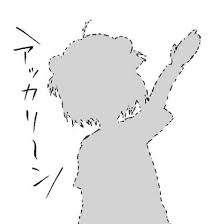目录:
- 导读
- Yaw,Pitch,Roll与向量的旋转
- 利用向量旋转一个圆
导读
导读 本教程需要读者有一定的空间想象能力(因为我也懒得画图了233) 本教程使用的 Spigot1.10.2-R0.1-SNAPSHOT 核心 在阅读之前请确保你具有高中数学必修4和选修4-4坐标系与参数方程和Java基础的知识 (没有我不会解释的)
高三时间有限,我就不解释了,请读者见谅! —— 作者 2019/1/12
<To初中生>: 如果你是初中的话,别慌,你有趋向的概念就可以读懂本教程(应该吧...)
<To高中生>: 如果你还未学到关于上面的那本书,别慌学到了再来看也行233 (雾
<To大学生>: 没什么好说的...
Yaw,Pitch,Roll与向量的旋转
这次我们来讲讲一些概念上的东西,在Minecraft中除了X, Y, Z之外Location还有两个量一个是Yaw一个是Pitch,这两个东西在学术上被称为欧拉角(飞机姿态角) 怎么理解这三个内容呢?
Yaw: 我们 水平旋转 我们的头,也就是左右转头,这就是一次Yaw转动
Pitch: 我们 上下旋转 我们的头,也就是上下点头,这就是一次Pitch转动
Roll: 这个东西在Minecraft里面没有,但是我也讲一下,大家都玩过绝地求生吧,里面的人物QE摇头时就是一次Roll转动
看不懂我说的可以看别的有图的

在Minecraft当中,Yaw为0时,它表示的就是Z轴正半轴的方向,为-90°时则表示X轴正半轴的方向
Pitch就是你的Steve上下看时的方向,看向天空时最大值是-90,看向地板时最大值是90,正视时就是0
概念的东西都讲完了,我们来谈谈向量的旋转,那么在数学上的话,平面向量的旋转是有直接的公式套用,或者利用矩阵也可以达到目的,点我看相关资料
那么通过上面的资料,我们就可以得到三个方法
- /**
- * 将一个向量围绕X轴旋转angle个角度
- *
- * @param v 向量
- * @param angle 角度
- * @return {@link Vector}
- */
- public static Vector rotateAroundAxisX(Vector v, double angle) {
- angle = Math.toRadians(angle);
- double y, z, cos, sin;
- cos = Math.cos(angle);
- sin = Math.sin(angle);
- y = v.getY() * cos - v.getZ() * sin;
- z = v.getY() * sin + v.getZ() * cos;
- return v.setY(y).setZ(z);
- }
- /**
- * 将一个向量围绕Y轴旋转angle个角度
- *
- * @param v 向量
- * @param angle 角度
- * @return {@link Vector}
- */
- public static Vector rotateAroundAxisY(Vector v, double angle) {
- angle = -angle;
- angle = Math.toRadians(angle);
- double x, z, cos, sin;
- cos = Math.cos(angle);
- sin = Math.sin(angle);
- x = v.getX() * cos + v.getZ() * sin;
- z = v.getX() * -sin + v.getZ() * cos;
- return v.setX(x).setZ(z);
- }
- /**
- * 将一个向量围绕Z轴旋转angle个角度
- *
- * @param v 向量
- * @param angle 角度
- * @return {@link Vector}
- */
- public static Vector rotateAroundAxisZ(Vector v, double angle) {
- angle = Math.toRadians(angle);
- double x, y, cos, sin;
- cos = Math.cos(angle);
- sin = Math.sin(angle);
- x = v.getX() * cos - v.getY() * sin;
- y = v.getX() * sin + v.getY() * cos;
- return v.setX(x).setY(y);
- }
那么如果我们想用Yaw和Pitch来旋转向量应该怎么做呢?这里我直接给出方法,来自开源项目EffectLib里的VectorUtils.java
- /**
- * This handles non-unit vectors, with yaw and pitch instead of X,Y,Z angles.
- * <p>
- * Thanks to SexyToad!
- * <p>
- * 将一个非单位向量使用yaw和pitch来代替X, Y, Z的角旋转方式
- *
- * @param v 向量
- * @param yawDegrees yaw的角度
- * @param pitchDegrees pitch的角度
- * @return
- */
- public static final Vector rotateVector(Vector v, float yawDegrees, float pitchDegrees) {
- double yaw = Math.toRadians(-1 * (yawDegrees + 90));
- double pitch = Math.toRadians(-pitchDegrees);
- double cosYaw = Math.cos(yaw);
- double cosPitch = Math.cos(pitch);
- double sinYaw = Math.sin(yaw);
- double sinPitch = Math.sin(pitch);
- double initialX, initialY, initialZ;
- double x, y, z;
- // Z_Axis rotation (Pitch)
- initialX = v.getX();
- initialY = v.getY();
- x = initialX * cosPitch - initialY * sinPitch;
- y = initialX * sinPitch + initialY * cosPitch;
- // Y_Axis rotation (Yaw)
- initialZ = v.getZ();
- initialX = x;
- z = initialZ * cosYaw - initialX * sinYaw;
- x = initialZ * sinYaw + initialX * cosYaw;
- return new Vector(x, y, z);
- }
具体的证明过程我这里就不阐述了,请读者自行解决吧...
那么有了上面的基础我们就可以来做一个简单向量旋转的特效
利用向量旋转一个圆
首先我们需要做个分析 如果我们要用向量制作一个围绕Y轴的圆可以怎么做呢? 我们看下方的代码
- public void createACircleWithVector(Location loc) {
- double radius = 1D;
- // 我们直接在X轴正半轴上加一个单位, 用来制作我们的第一个向量
- Vector originalVector = getVector(loc, loc.clone().add(1, 0, 0));
- originalVector.multiply(radius); // 圆的半径长度
- for (int degree = 0; degree < 360; degree++) {
- // 我们将向量进行旋转
- Vector vector = VectorUtils.rotateAroundAxisY(originalVector, degree);
- loc.add(vector);
- loc.getWorld().spawnParticle(Particle.FLAME, loc, 0);
- loc.subtract(vector);
- }
- }
- /**
- * 取第一个坐标到第二个坐标的向量
- *
- * @param firstLocation 坐标1
- * @param secondLocation 坐标2
- * @return {@link Vector}
- */
- public static Vector getVector(Location firstLocation, Location secondLocation) {
- return secondLocation.clone().subtract(firstLocation).toVector();
- }

首先我们在loc的X轴上增加了一个单位也就是图中的A点,那么我们利用终点减起点来得到向量OA(看不懂的去复习MC特效二),那么这个向量OA我们将做为我们的待旋转向量
之后我们进入循环,我们假设degree是2 Vector vector = VectorUtils.rotateAroundAxisY(originalVector, 2); 那么我们调用该方法即可得到绕Y轴逆时针旋转2个角度后的向量
之后就是坐标加向量,绘制粒子,坐标减去向量保持坐标不变等一系列通法 最终的效果就是这样啦

那么我们如果想制作一个类似物品掉落时,然后物品围绕Y轴旋转的那种效果,我们又要怎么做呢?这里我们就要利用到Yaw和Pitch
首先我们这里新建一个类用于旋转圆特效的实现,并且让它继承BukkitRunnable,当然Runnable也是可以的
- public class RotatableCircle extends BukkitRunnable {
- // 原点
- private Location location;
- // X轴上的单位向量
- private Vector originalVector;
- private float yaw = 0;
- private double radius = 1D;
- public RotatableCircle(Location location) {
- this.location = location.clone();
- // getVector() 方法是上面已经发过的一个方法,目的是构造一个向量OA
- originalVector = getVector(location, location.clone().add(1, 0, 0));
- }
- @Override
- public void run() {
- }
- /**
- * 取第一个坐标到第二个坐标的向量
- *
- * @param firstLocation 坐标1
- * @param secondLocation 坐标2
- * @return {@link Vector}
- */
- public static Vector getVector(Location firstLocation, Location secondLocation) {
- return secondLocation.clone().subtract(firstLocation).toVector();
- }
- }
从上方的代码我们先简单的需要几个基本量,待旋转向量和原点即可,之后yaw和radius分别是yaw和圆的半径
在构造函数里,我们将传入的location参数进行克隆以防原location的变动 之后我们依然做一个向量OA,当作待旋转向量



- // 请注意第三个参数 θ 是角度
- Vector vector = VectorUtils.rotateVector(originalVector, 0, θ)
那么有了上面的铺垫我们可以这么写我们的RotatableCircle
- public class RotatableCircle extends BukkitRunnable {
- // 原点
- private Location location;
- // X轴上的单位向量
- private Vector originalVector;
- private float yaw = 0;
- private double radius = 1D;
- public RotatableCircle(Location location) {
- this.location = location.clone();
- originalVector = VectorUtils.getVector(location, location.clone().add(1, 0, 0));
- }
- @Override
- public void run() {
- // 我们假设是第一次yaw旋转, 那么是0, 所以我们先将originalVector旋转yaw个单位
- Vector vectorYaw = VectorUtils.rotateVector(originalVector, yaw, 0);
- // 之后我们将pitch进行 90 ~ -90 的一个循环用于将向量进行上下翻转
- for (float pitch = 90; pitch > -90; pitch--) {
- Vector vector = VectorUtils.rotateVector(vectorYaw, 0, pitch);
- // 这样得出来的vector只有一个半圆, 那么另外一个向量我们可以通过得到相反向量来制造出
- Vector reverseVector = vector.clone().multiply(-1);
- // 在正方向上绘制粒子
- location.add(vector);
- location.getWorld().spawnParticle(Particle.FLAME, location, 0);
- location.subtract(vector);
- // 在反方向上绘制粒子
- location.add(reverseVector);
- location.getWorld().spawnParticle(Particle.FLAME, location, 0);
- location.subtract(reverseVector);
- }
- // 将yaw设定在0~360之间进行循环
- if (yaw >= 360) {
- yaw = 0;
- } else {
- yaw++;
- }
- }
- }
我们在代码中像下方一样调用
- RotatableCircle rotatableCircle = new RotatableCircle(location);
- rotatableCircle.runTaskTimer(你插件的主类实例, 0L, 3L);

结语
高三不易,望读者谅解! —— 撰写: 一个来自普高文科的学生
[groupid=1306]Bone Studio[/groupid]




